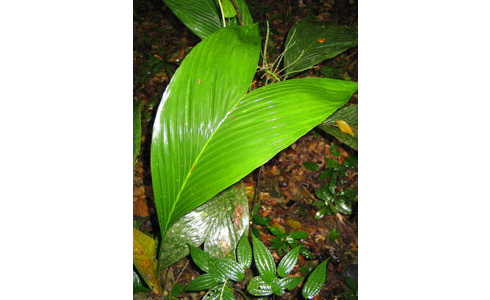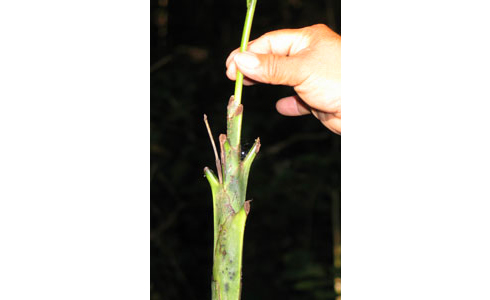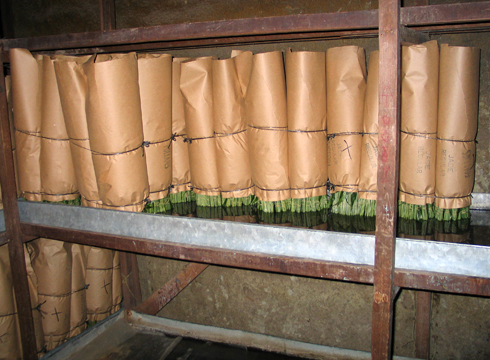Chamaedorea ernesti-augusti (fishtail palm)
The fishtail palm (Chamaedorea ernesti-augusti) is a shade-loving, understorey plant of Central American rainforests.
Species detail

The fishtail palm has beautiful and long-lasting leaves which are highly prized by the floricultural industry.
The fishtail palm has great economic value as its leaves are highly prized by the international floricultural industry for use in flower arrangements.
It is one of Central America’s most important non-timber forest products (NTFPs) and the livelihoods of many communities in Mexico, Guatemala and Belize depend in part upon harvesting wild populations.
However, there is cause for concern over the long-term sustainability of the industry as harvesting is usually unmanaged and frequently occurs illegally within local conservation areas.
-

Taxonomy
Learn about the genus Chamaedorea and the wider palm family (Arecaceae) that Chamaedorea ernesti-augusti belongs to.
-

Distribution, habitat and population biology
Discover the areas where Chamaedorea ernesti-augusti is found and the conditions that it commonly grows in, and learn potential reasons for the high degree of inbreeding within populations.
-

Biology
Find out the average height reached by the fishtail palm, how the plants are pollinated and their seeds dispersed, as well as how long they can survive in the wild.
-

Uses
Chamaedorea ernesti-augusti is considered an ideal flower arrangement addition. Find out how fishtail palms travel from the forest to the local florist.
-

Conservation and threats
Find out the major factors threatening the survival of this highly endangered palm, as well as regional initiatives that hope to lessen the ecological impact of leaf harvesting.
Images

The fishtail palm is an understorey plant of rainforest in Mexico, Guatemala and Belize. It is typical of karstic limestone regions.

A leaf of the fishtail palm.

The flowers of the fishtail palm are pollinated by thrips (tiny insects).

The stem of a wild fishtail palm from Belize showing that most of its leaves have been cut. There is concern that unregulated harvesting of fishtail leaves threatens populations of this species.

Once cut, the leaves of the fishtail palm, known locally as xate, are bundled into packs and carried through the forest to a sorting station.

Once sorted for quality, fishtail palm leaves are placed in a coldstore before being shipped to flower trade centres such as Miami and Amsterdam.

A fishtail palm plantation.
Author
Sam Bridgewater
Associate Scientist
Botany Department
